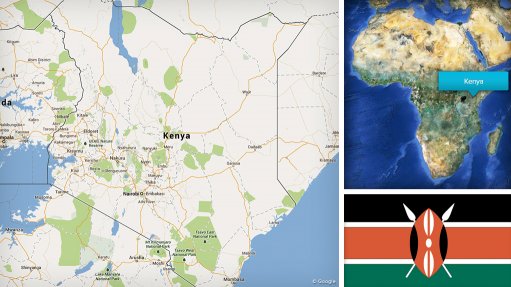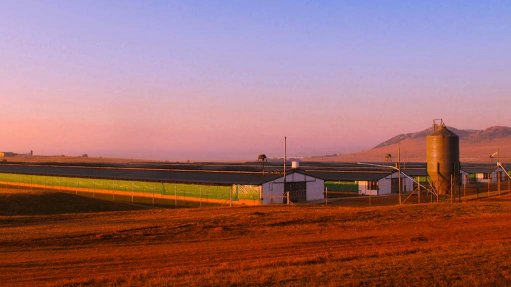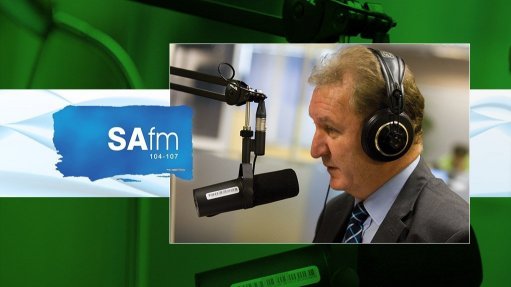Report questions role of CCUS in steel decarbonisation
A new report by the Institute of Energy Economics and Financial Analysis (IEEFA) has shown that carbon capture use and storage (CCUS) is unlikely to play a major role in steel decarbonisation despite support for the technology at the 2023 COP28 climate conference.
Direct reduced iron- (DRI-) based steelmaking, which can run on green hydrogen, is gaining momentum in the steel sector, the institute points out.
The IEEFA’s research posits that this technology – along with electric arc furnaces (EAFs) powered by renewable electricity – offers steelmakers a far more promising pathway to reduce their emissions than CCUS.
However, many major steelmakers around the world maintain that CCUS will play a role in decarbonising their operations.
“Major steelmakers’ plans for CCUS tend to push commercial-scale implementation of the technology off into the 2040s and lack detail. CCUS technology has been around for nearly 50 years and has accumulated a history of significant underperformance,” IEEFA lead steel financial analyst Simon Nicholas says.
“CCUS is susceptible to significant financial, technological and environmental risks, made worse by uncertainty over the long-term effectiveness of geological carbon dioxide (CO2) storage. The uniqueness of each CCUS project limits technological learning and cost reductions. The cost of carbon capture implementation has hardly reduced in decades, while the cost of technologies like renewable energy and battery storage has plunged, with further reductions to come,” IEEFA says.
“The International Energy Agency (IEA) has a record of reliance on CCUS for decarbonisation, but now it appears to have started to shift in its long-term view on decarbonising the steel industry. We expect the IEA will continue to downgrade the role it expects CCUS to play in steel decarbonisation in future updates,” says Nicholas.
“A key issue with CCUS that is often missed is its low rate of capture. CCUS projects have consistently struggled to reach targeted capture rates. Moreover, targeted carbon capture itself is often far below overall carbon emissions. Installations that capture low CO2 levels cannot be viewed as decarbonised,” he adds.
The steel sector’s first and only commercial-scale CCUS plant, the Al Reyadah CCUS facility in the UAE, captured less than 20% of the total Scope 1 and 2 emissions from Emirates Steel Arkan’s DRI-based steel plant in 2020 and 2021, the IEEFA points out.
Moreover, the captured CO2 is used for enhanced oil recovery (EOR), enabling the production of more fossil fuels and the release of additional carbon emissions, it adds.
“Despite being operational for eight years, no other commercial-scale carbon capture facilities for steelmaking have been built.
“Emirates Steel Arkan is now turning to alternative technology that it appears to consider more effective for decarbonising steel. The company is establishing the first pilot project for DRI-EAF using green hydrogen in the Middle East. The project is expected to start up in 2024,” says IEEFA global steel financial analyst Soroush Basirat, who also co-authored the report.
Low capture rates will likely mean that any CCUS installations will not decarbonise steel production enough to satisfy the growing number of steel consumers demanding truly green steel, the IEEFA posits.
It points out that car makers are already signing purchase agreements for green steel made using green hydrogen with virtually no emissions. Tighter definitions of what exactly constitutes ‘green steel’ can be expected in the near future, the entity says.
“There is a significant risk that the low capture rates of CCUS will mean steel produced this way will not meet such definitions. Steelmakers will become increasingly exposed to the risk that steel consumers will not want coal involved in their supply chains at all,” says Nicholas.
“The phrases ‘hard to abate’ and ‘carbon capture and storage’ often go hand in hand. Some steelmakers seem to be using the phrase ‘hard to abate’ as an excuse to justify indefinite plans for CCUS in future decades while continuing business as usual to a large extent.
“Where better and more cost-competitive alternatives exist, CCUS is unlikely to play a role in decarbonisation. Using green hydrogen in DRI and renewable energy to power EAFs enables the production of truly low-carbon steel, a feat CCUS looks unable to replicate,” he adds.
Comments
Press Office
Announcements
What's On
Subscribe to improve your user experience...
Option 1 (equivalent of R125 a month):
Receive a weekly copy of Creamer Media's Engineering News & Mining Weekly magazine
(print copy for those in South Africa and e-magazine for those outside of South Africa)
Receive daily email newsletters
Access to full search results
Access archive of magazine back copies
Access to Projects in Progress
Access to ONE Research Report of your choice in PDF format
Option 2 (equivalent of R375 a month):
All benefits from Option 1
PLUS
Access to Creamer Media's Research Channel Africa for ALL Research Reports, in PDF format, on various industrial and mining sectors
including Electricity; Water; Energy Transition; Hydrogen; Roads, Rail and Ports; Coal; Gold; Platinum; Battery Metals; etc.
Already a subscriber?
Forgotten your password?
Receive weekly copy of Creamer Media's Engineering News & Mining Weekly magazine (print copy for those in South Africa and e-magazine for those outside of South Africa)
➕
Recieve daily email newsletters
➕
Access to full search results
➕
Access archive of magazine back copies
➕
Access to Projects in Progress
➕
Access to ONE Research Report of your choice in PDF format
RESEARCH CHANNEL AFRICA
R4500 (equivalent of R375 a month)
SUBSCRIBEAll benefits from Option 1
➕
Access to Creamer Media's Research Channel Africa for ALL Research Reports on various industrial and mining sectors, in PDF format, including on:
Electricity
➕
Water
➕
Energy Transition
➕
Hydrogen
➕
Roads, Rail and Ports
➕
Coal
➕
Gold
➕
Platinum
➕
Battery Metals
➕
etc.
Receive all benefits from Option 1 or Option 2 delivered to numerous people at your company
➕
Multiple User names and Passwords for simultaneous log-ins
➕
Intranet integration access to all in your organisation


















